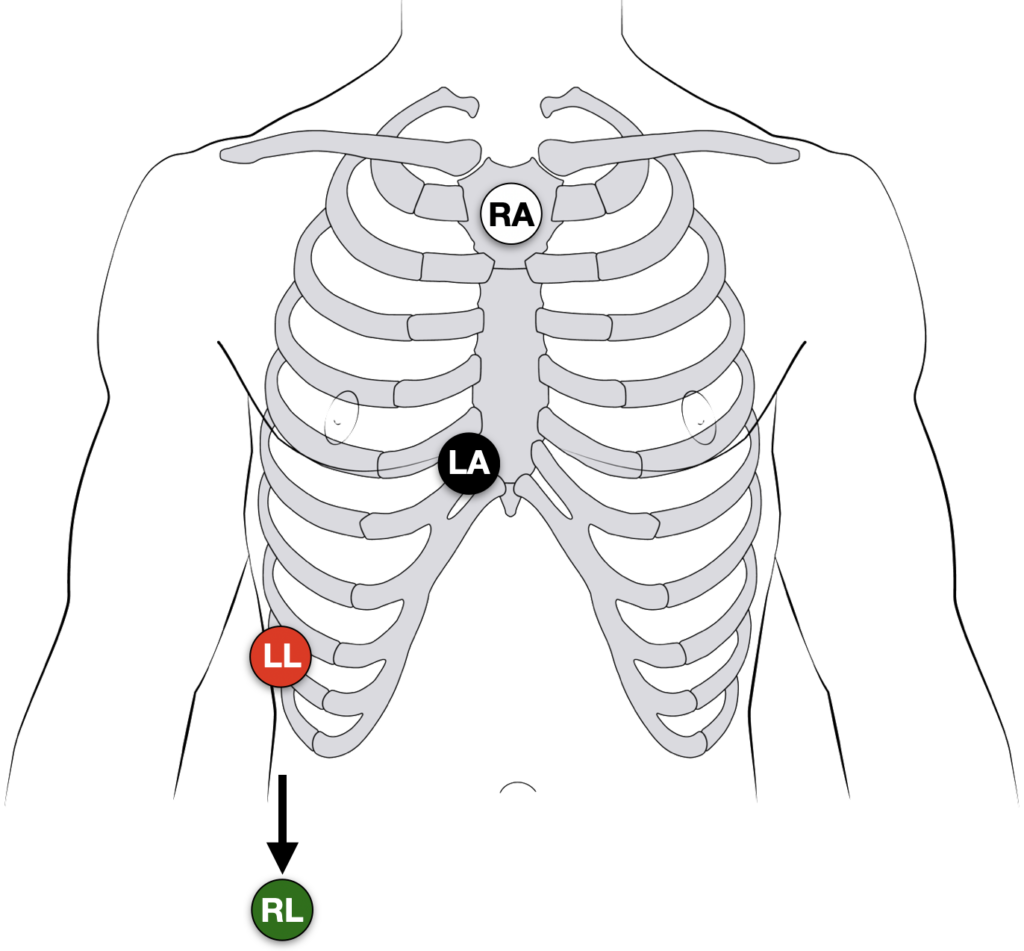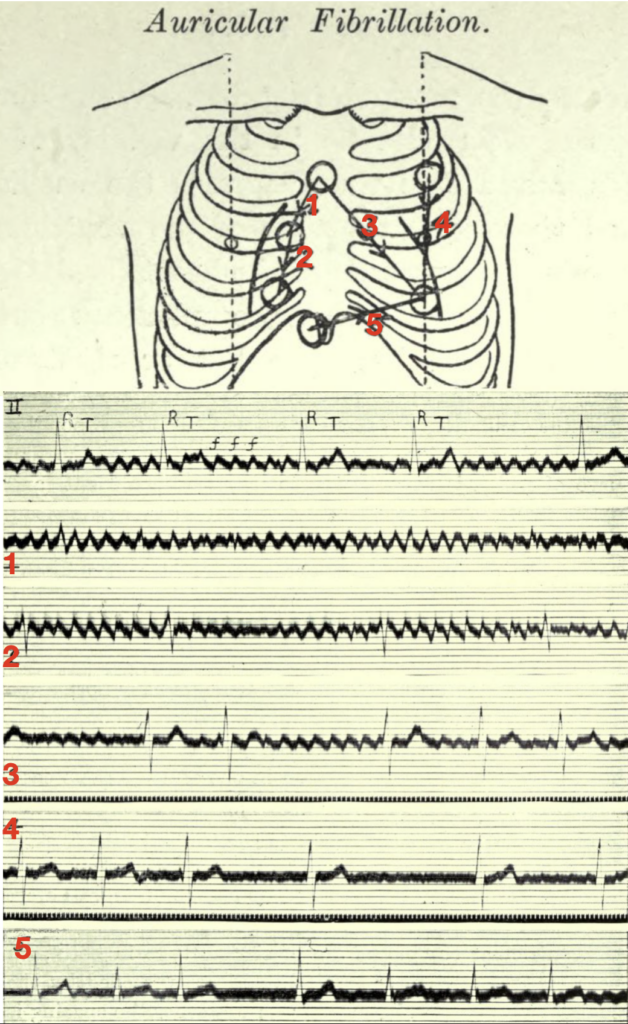Thomas Lewis
Biography
- Born on December 26, 1881 in Cardiff, Wales
- 1902 – BSc University College, Cardiff,
- 1927 – Suffered first heart attack and gave up his ’70 a day’ habit recognizing before others did that ‘smoking injures the blood vessels.’
- 1935 – Suffered a second heart attack and remarked ‘..another arrow from the same quiver my friend, and one of them will get me in the end‘
- Died on March 17, 1945 of myocardial infarction. Buried in Llangasty churchyard, Breconshire, Wales, overlooking Llangorse Lake, where he fished and studied nature as a young boy.
Einthoven acknowledged Lewis in his 1925 Nobel Prize acceptance speech:
…Thomas Lewis, who has played a great part in the development of electrocardiography deserves a special mention. It is my conviction that the general interest in ECG would certainly not have risen so high, nowadays, if we had had to do without his work, and I doubt whether without his valuable contributions I should have the privilege of standing before you today.
Einthoven 1925
Medical Eponyms
Lewis lead (S5-lead) (1913)
The Lewis lead configuration is a modified limb lead configuration that accentuates atrial activity, originally developed to assess atrial fibrillation. It is used to better detect atrial activity in relation to that of the ventricles.
P waves (atrial activity) are usually are much less apparent than ventricular activity. The Lewis lead can be of value in amplifying these waves in observing flutter waves in atrial flutter; clarifying the mechanism of an atrial arrhythmia; and detecting P waves in wide complex tachyarrhythmia to identify atrioventricular dissociation.
Lewis lead placement
- Right Arm (RA) electrode on manubrium
- Left Arm (LA) electrode over 5th ICS, right sternal border.
- Left Leg (LL) electrode over right lower costal margin.
- Right Leg (RL) electrode in standard position on right leg
- Monitor Lead I and II
Note: Increasing calibration from 10 to 20mm/mV; and paper speed from 25 to 50mm/second can further amplify the atrial activity


History of the Lewis Lead
Thomas Lewis developed and described (1913) his lead configuration to magnify atrial oscillations present during atrial fibrillation.
When fibrillation is present and the electrodes lie in the vicinity of the right auricle (leads 1 and 2 of the diagram) the oscillations are maximal, and there is but a trace of the ventricular beats. When they lie in the long axis of the heart (lead 3) then both the oscillations and the ventricular complexes are conspicuous. Finally, when they lie along the left or right ventricular border (leads 4 and 5) the ventricular complexes are clear cut while the oscillations are small or absent.
The corresponding electrocardiograms are shown below the diagram, the first curve of which is from the customary lead II (right arm to left leg). The oscillations of fibrillation are readily identified in this manner and their origin in the auricle is clearly indicated. In tremulous subjects, no oscillations are seen in any of the special leads.
Lewis 1913

Lewis T. Auricular fibrillation 1913
The first electrocardiogram is from lead II; it consists of irregularly placed ventricular complexes (R, T) and of large and continuous oscillations (f f).
The remaining five curves are from the chest wall.
- 1 and 2 were taken from the area overlying the right auricle; in these leads the oscillations are maximal and the ventricular complexes are minimal.
- 3 was taken from an oblique lead covering the whole heart, and it shows both oscillations and ventricular complexes.
- 4 and 5 were taken from leads along the margins of the ventricles; they show but little sign of the oscillations.
Key Medical Attributions
Major Publications
- Lewis T. Auricular fibrillation: A common clinical condition. Br Med J 1909; 2: 1528
- Lewis T. Auricular fibrillation and its relationship to clinical irregularity of the Heart. Heart 1910; 1(4): 306–372.
- Lewis T. The mechanism of the heart beat with especial reference to its clinical pathology. London, Shaw. 1911
- Lewis T. Clinical disorders of the heartbeat. London, Shaw. 1912
- Lewis T. Clinical electrocardiography. London, Shaw. 1913
- Lewis T. Lectures on the heart. New York P.B. Hoeber 1915
- Lewis T. The spread of the excitatory process in the vertebrate heart. Parts I-V. Philosophical Transactions of the Royal Society B 1916; 207
- Lewis T. The soldier’s heart and the effort syndrome. London, Shaw. 1918
- Lewis T. The mechanism and graphic registration of the heart beat. London, Shaw. 1920
- Lewis T. Clinical science : illustrated by personal experiences. London, Shaw. 1934
- Lewis T. Reflections upon reform in medical education. Lancet 1944; 243(6298): 619–621
References
Biography
- Sir Thomas Lewis (1881-1945) experimental cardiologist. JAMA. 1966; 195(12): 1055-6.
- Hollman A. Thomas Lewis: physiologist, cardiologist and clinical scientist. Clin Cardiol. 1985; 8(10): 555-9.
- Hollman A. Sir Thomas Lewis: Clinical Scientist and Cardiologist, 1881–1945. Journal of Medical Biography, 1994; 2(2), 63–70.
- Xiao HB, Lawrence C. Reappraisal of Thomas Lewis’s place in the history of electrocardiography. J Electrocardiol. 1996; 29(4): 347-50
- Hollmann A. Sir Thomas Lewis: Pioneer Cardiologist and Clinical Scientist. Springer. 1997
- Krikler DM. Thomas Lewis, a father of modern cardiology. Heart. 1997; 77(2): 102–103.
- Pearce JM. Sir Thomas Lewis MD, FRS. (1881-1945). J Neurol. 2006; 253(9): 1246-7
- Biography: Sir Thomas Lewis. Lives of the Fellows of the Royal College of Physicians of London. Munk’s Roll: Volume IV: 531.
- Bibliography. Lewis, Thomas Sir 1881-1945. WorldCat Identities
Eponymous terms
- Nahm F, Freeman R. Vasovagal syncope: the contributions of Sir William R. Gowers and Sir Thomas Lewis. Arch Neurol. 2001; 58(3): 509-511.
- Bakker AL, Nijkerk G, Groenemeijer BE, Waalewijn RA, Koomen EM, Braam RL, Wellens HJ. The Lewis lead: making recognition of P waves easy during wide QRS complex tachycardia. Circulation. 2009 Jun 23; 119(24): e592-3
- Buttner R, Cadogan M. Lewis Lead. LITFL
- Buttner R. Lewis Lead. Eponym A Day. Instagram
- Cadogan M. History of the Electrocardiogram. LITFL
eponymictionary
the names behind the name

